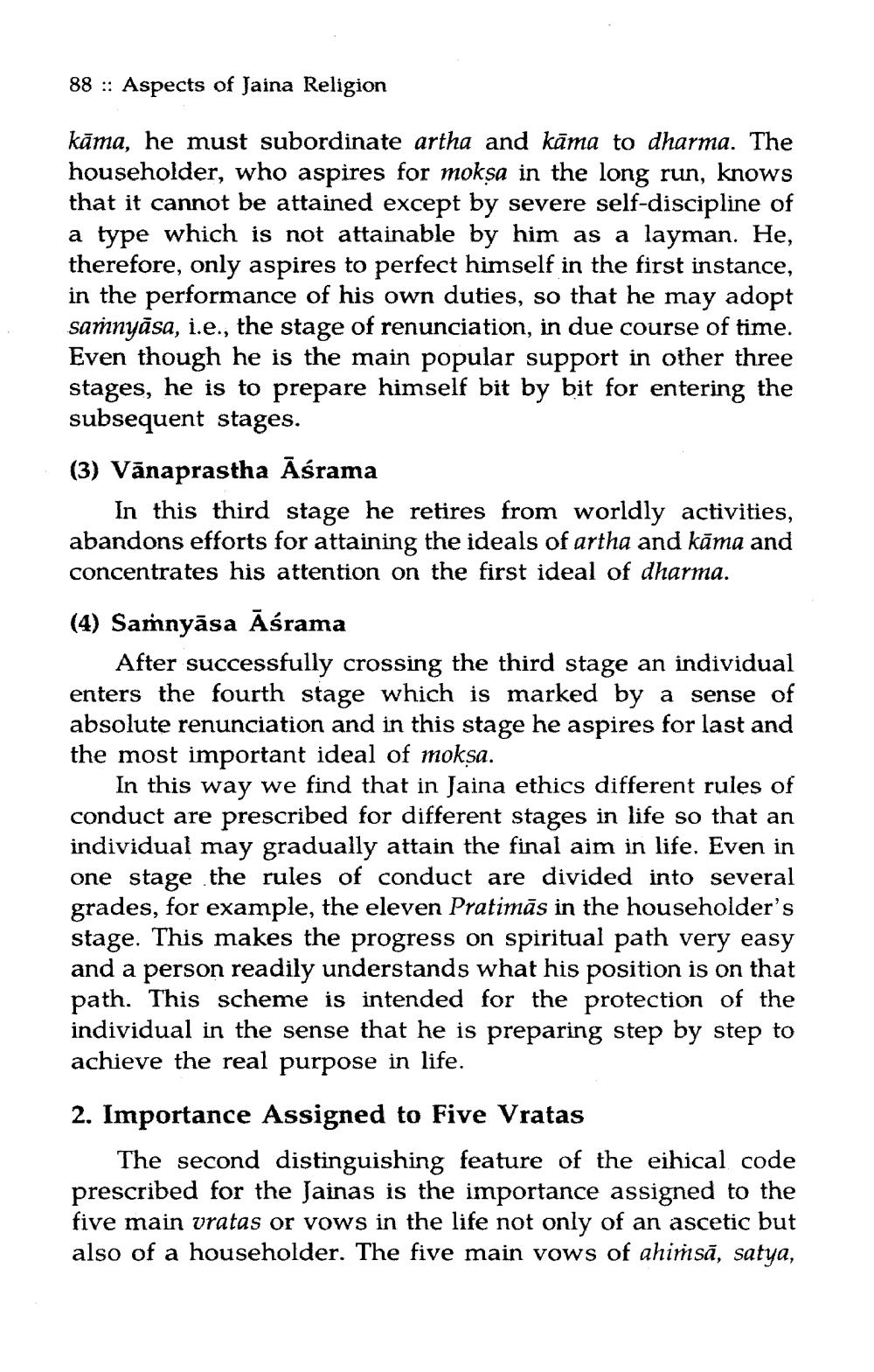________________
88 :: Aspects of Jaina Religion
kāma, he must subordinate artha and kāma to dharma. The householder, who aspires for moksa in the long run, knows that it cannot be attained except by severe self-discipline of a type which is not attainable by him as a layman. He, therefore, only aspires to perfect himself in the first instance, in the performance of his own duties, so that he may adopt samnyāsa, i.e., the stage of renunciation, in due course of time. Even though he is the main popular support in other three stages, he is to prepare himself bit by bit for entering the subsequent stages. (3) Vānaprastha Asrama
In this third stage he retires from worldly activities, abandons efforts for attaining the ideals of artha and kāma and concentrates his attention on the first ideal of dharma. (4) Samnyāsa Asrama
After successfully crossing the third stage an individual enters the fourth stage which is marked by a sense of absolute renunciation and in this stage he aspires for last and the most important ideal of moksa.
In this way we find that in Jaina ethics different rules of conduct are prescribed for different stages in life so that an individual may gradually attain the final aim in life. Even in one stage the rules of conduct are divided into several grades, for example, the eleven Pratimās in the householder's stage. This makes the progress on spiritual path very easy and a person readily understands what his position is on that path. This scheme is intended for the protection of the individual in the sense that he is preparing step by step to achieve the real purpose in life.
2. Importance Assigned to Five Vratas
The second distinguishing feature of the eihical code prescribed for the Jainas is the importance assigned to the five main vratas or vows in the life not only of an ascetic but also of a householder. The five main vows of ahiṁsā, satya,




